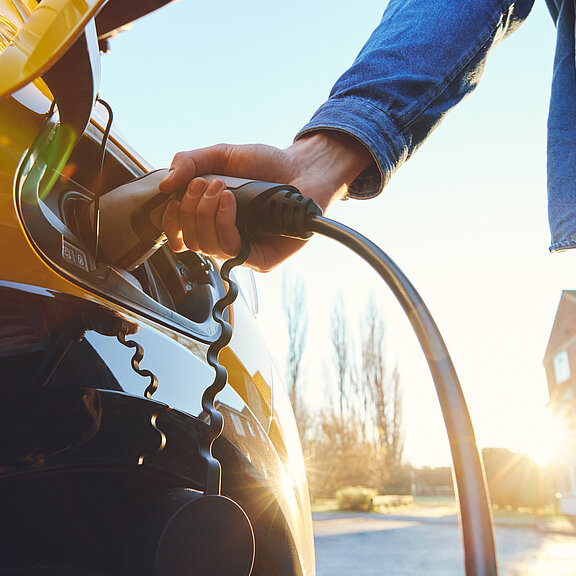
E-mobility is on the rise again – and this time, it’s here to stay
The resurgence of e-mobility is far from a passing trend. According to an IEA report, the global stock of electric vehicles (EVs) surpassed 40 million units in 2023, a figure that more than doubled in just two years. Even more striking, one in five cars sold in 2023 was electric, a sharp rise from just 2% five years earlier. This rapid acceleration signals that EVs are here to stay and the challenges that once stalled the e-mobility market in the late 2010s are now steadily being overcome.
Infrastructure is expanding, consumer confidence is growing, and industry leaders are actively addressing the technical barriers that once slowed adoption. The next five years will define the future of road travel, and this time, e-mobility has the momentum and the market demand to establish itself as the dominant force.
Charging infrastructure is no longer an obstacle
In 2016, e-mobility stations started appearing beyond service stations, expanding into off-road locations, and making charging more convenient. This shift was crucial in breaking the perception that EVs were impractical for long journeys. At the same time, charging technology evolved. Smart charging solutions now optimise grid usage, ensuring power is distributed efficiently. Industry leaders like Bender, whose solutions are integral to EV charging stations, are actively collaborating with standards committees to enhance safety across networks. Infrastructure is no longer the limiting factor – scalability is now the challenge.
Despite these advancements, Council funding has stalled, slowing the pace of infrastructure development. However, with projections of 300,000 electric cars on UK roads by 2030, demand will force further expansion. Governments and private stakeholders must now invest strategically to meet the needs of a growing EV market. Large-scale deployment of high-speed chargers, particularly in residential areas and commercial hubs, will be key. Without widespread access, adoption could stall, undermining both public and private sustainability goals.
Another pressing challenge is standardisation. As manufacturers introduce proprietary charging solutions, interoperability issues could create barriers for EV owners. Establishing universal charging standards would eliminate these hurdles, ensuring that all vehicles can access a unified network. Companies like Bender recognised the growth potential in e-mobility early, investing nearly a decade ago, including the 2016 acquisition and subsequent integration of ebee, a pioneer in charging-controller solutions and advanced software engineering. This foresight has allowed Bender to have a fully approved product and a dedicated e-mobility team already in place, positioning itself at the forefront of the industry with solutions ready to meet the rising demand.
Consumer confidence is driving adoption
Early concerns about charging access are fading. Range anxiety which was once a major barrier to EV adoption has diminished as charging networks expand, giving drivers the confidence to travel without fear of running out of power. The key factor? Adaptation.
Just as owners of petrol cars rarely worry about finding a petrol station, EV drivers are now planning their journeys with charging stops in mind. This shift in perception has been critical to wider acceptance, making EVs a viable option for more people. Businesses are also responding by integrating charging solutions into workplaces, retail parks, and residential areas, further embedding EV infrastructure into daily life. Yet, some challenges still remain unsolved.
A power infrastructure that supports scalability
The UK power grid presents a significant challenge. The existing infrastructure can only support a certain amount of power at any given time which could become a significant constraint as EV adoption accelerates. It’s not a question of if the number of EVs will grow and dominate the market, but when. Without upgrades, demand could outstrip supply, leading to bottlenecks that slow progress. Dynamic load management solutions are already improving power distribution, optimising grid efficiency in real time. However, long-term investment in grid expansion is essential to ensure the infrastructure can keep pace with the growing needs of an electrified transport system.
Industry leaders are already developing solutions. Bender, for example, is contributing to smarter charging systems that manage electricity demand without overloading the network. Collaboration between technology providers, energy companies, and policymakers will be key to creating a resilient grid. Without these advancements, EV growth risks being limited by the very system meant to support it.
Energy storage solutions also play a role. Innovations in battery technology and smart grids could help manage fluctuations in electricity demand, reducing the strain on traditional power networks. Vehicle-to-grid (V2G) technology, which allows EVs to return power to the grid during peak times, offers an additional way to balance supply and demand.
Another crucial factor is renewable energy integration. The sustainability of e-mobility depends on the ability to charge vehicles using clean energy. Without a commitment to renewables, EV adoption alone will not be enough to achieve significant carbon reductions. Expanding solar, wind, and other renewable energy sources will ensure that e-mobility contributes to a truly sustainable future.
Advanced monitoring of electrical infrastructure will play an increasing role in improving efficiency and reliability. Bender is currently developing real-time monitoring solutions that ensure power networks and charging stations operate optimally. The ability to identify and address issues proactively will be key in scaling the infrastructure to support a growing EV fleet. However, there are still challenges that we need to overcome.
The remaining hurdles on the path to widespread EV adoption
One of the biggest hurdles to mass EV adoption remains cost. Electric vehicles are still priced higher than their internal combustion engine (ICE) counterparts, making them less accessible to many consumers. To bridge this gap, incentives such as tax cuts and subsidies are essential, helping to accelerate adoption by making EVs a more financially viable option. Without these measures, many potential buyers will remain hesitant or unable to make the switch, particularly as stricter environmental policies such as low and zero-emission zones begin to take effect in some cities. Policymakers must take decisive action to ensure cost parity, encouraging broader uptake and making EVs an accessible choice for all.
Beyond affordability, consumer education remains a factor. Many prospective buyers still hold misconceptions about battery lifespan, maintenance costs and overall performance. The industry must bridge these knowledge gaps by providing clear and accessible information. Automakers and policymakers should work together to dispel myths and provide transparent comparisons with traditional vehicles.
At the same time, regulatory and financial commitments will shape the future of EV infrastructure. With the current five-year regulatory control period ending this year, the next phase of expansion hinges on renewed commitments. Government policies and budget allocations made now will dictate the pace of charging infrastructure growth. To maintain momentum and prevent setbacks, swift action is required. Delays could risk slowing progress just as EV adoption reaches a tipping point.
E-mobility is evolving, and we need to be ready for it
The shift to e-mobility is accelerating but immediate challenges remain. Securing funding, stabilising policy frameworks and ensuring grid readiness are critical to sustaining progress. Governments must deliver an environment that fosters long-term investment and infrastructure expansion. However, the barriers that once held back EV adoption are slowly being dismantled, as reflected in the growing numbers of EV stock.
The future of road mobility is undoubtedly green, and the next five years will shape it for generations to come. To drive meaningful change, we must have the right infrastructure, policies, and public awareness in place to ensure that e-mobility delivers on its promise to reduce emissions and create a cleaner, more sustainable future.
By Gareth Brunton, Managing Director at Bender UK



